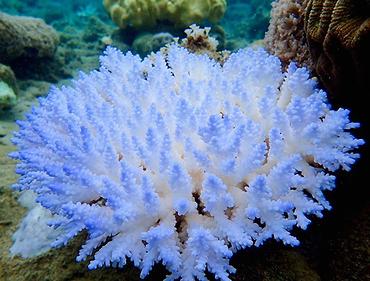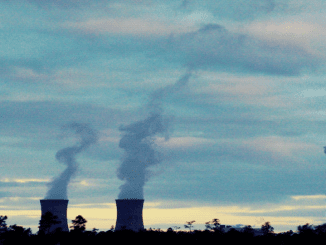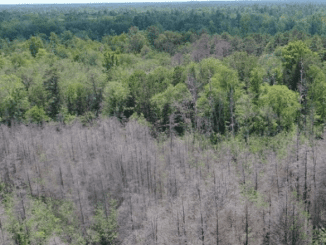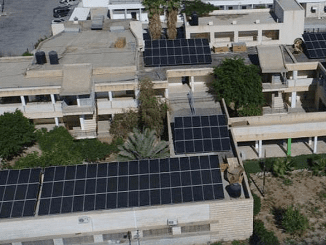
GLAND, Switzerland, February 17, 2021 (ENS) – Climate change is now the biggest threat to natural World Heritage sites with their incomparable landscapes, rare ecological processes, critical habitat and exceptional biodiversity, finds a new assessment by the International Union for the Conservation of Nature, IUCN.
A third of natural World Heritage sites are threatened by climate change, including the world’s largest coral reef, Australia’s Great Barrier Reef, which was labeled of “critical” concern for the first time in the latest in IUCN’s tri-annual Outlook report series.

IUCN World Heritage Outlook 3 builds on previous reports from 2014 and 2017 to track whether the conservation of the world’s 252 natural World Heritage sites is sufficient to protect them in the long term. It finds that climate change has overtaken invasive species as the top threat to natural World Heritage and that since 2017 more sites have deteriorated than improved.
Natural World Heritage sites are some of the Earth’s most valuable natural assets as recognized by the countries where they occur and by the UN Educational, Scientific and Cultural Organization, UNESCO, which in 2008 defined them as “irreplaceable sources of life and inspiration…our touchstones, our points of reference, our identity.”
But the climate keeps heating up. The year 2020 was one of the three warmest on record, and rivaled 2016 for the top spot, according to a consolidation of five international datasets by the World Meteorological Organization, WMO. 2011-2020 was the warmest decade on record, “in a persistent long-term climate change trend” the agency says.
“The IUCN World Heritage Outlook 3 reveals the damage climate change is wreaking on natural World Heritage, from shrinking glaciers to coral bleaching to increasingly frequent and severe fires and droughts,” said IUCN Director General Bruno Oberle, a Swiss biologist and environmental scientist appointed in July 2020 to replace Inger Andersen who now heads the UN Environment Programme, UNEP.
“As the international community defines new objectives to conserve biodiversity, this report signals the urgency with which we must tackle environmental challenges together at the planetary scale,” Dr. Oberle insisted, emphasizing the seriousness of the situation.
Among the 83 natural World Heritage sites now threatened by climate change is the Great Barrier Reef, where ocean warming, acidification and extreme weather have contributed to dramatic coral decline, and as a result, to decreasing populations of marine species.
In the Cape Floral Region Protected Areas of South Africa, climate change has aggravated the spread of invasive species, while the Pantanal Conservation Area of Brazil was ruinously scorched by unprecedented wildfires in 2019-2020.

The largest internationally protected area on the planet is a World Heritage site in Canada and the United States. A string of parks comprises an impressive complex of glaciers and high peaks on both sides of the border between Canada’s Yukon Territory and Province of British Columbia and Alaska in the United States. The area contains Mount Logan, the highest peak in Canada, and Dall sheep, mountain goats, caribou, wolves, grizzlies and black bears. But climate change is causing trouble; the rapidly melting Kaskawulsh Glacier in the St. Elias Mountains has changed the river flow, depleting fish populations.
The IUCN World Heritage Outlook 3 assesses the prospects for World Heritage site values based on threats, and on how good protection and management is. It judges 63 percent of sites as either “good” or “good with some concerns,” while 30 percent are of “significant concern” and seven percent are “critical.”
Half of the sites were found to have “effective” or “highly effective” protection and management, with the sustainability of the sites’ funding being the most common issue rated as a “serious concern.”
The Outlook finds that 16 natural World Heritage sites have deteriorated since 2017, while only eight have improved.
The report also finds early evidence of the effects of the turmoil caused by the COVID-19 pandemic. While lower tourist numbers may ease pressure on some ecosystems, in more cases impacts appear negative. Closing sites to tourism causes significant revenue loss, and illegal activities are on the rise with fewer staff available to prevent them.
“The findings of the IUCN World Heritage Outlook 3 point to a dire need for adequate resources to manage our irreplaceable natural areas,” said Peter Shadie, director of IUCN’s World Heritage Programme. “Many natural World Heritage sites show that conservation can and does work for the greater good, and their achievements serve as models that can be replicated and scaled up elsewhere.”
“We need more inspiring examples like Comoé National Park in Côte d’Ivoire to ensure a brighter future for nature’s finest,” Shadie said.
The outlook of Comoé National Park continues to improve and is now “good with some concerns” after moving from “critical” in 2014 to “significant concern” in 2017. Due to political stability, effective management and international support, populations of chimpanzees, elephants and buffalos are stable, and rare birds are starting to return.
Dr. Oberle said, “Natural World Heritage sites are amongst the world’s most precious places, and we owe it to future generations to protect them.”
Access IUCN Conservation Outlook Assessments for 252 natural sites here.
© 2021, Environment News Service. All rights reserved. Content may be quoted only with proper attribution and a direct link to the original article. Full reproduction is prohibited.



